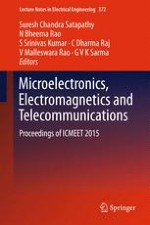2016 | OriginalPaper | Chapter
Optimization of Peak to Average Power Ratio Reduction Using Novel Code for OFDM Systems
Authors : R. Chandrasekhar, M. Kamaraju, K. Rushendra Babu, B. Ajay Kumar
Published in: Microelectronics, Electromagnetics and Telecommunications
Publisher: Springer India
Activate our intelligent search to find suitable subject content or patents.
Select sections of text to find matching patents with Artificial Intelligence. powered by
Select sections of text to find additional relevant content using AI-assisted search. powered by
